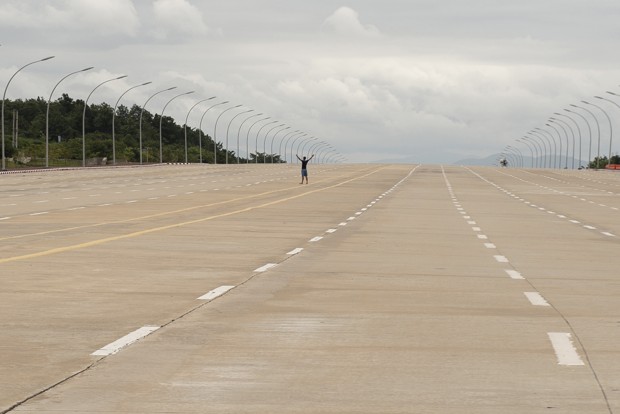In a recent book, the academic Vadim Rossman argues that it can be a smart move, under certain circumstances.
“Egypt needs a new capital like a hole in the head.” These were the words of the Cairo-based urban planner David Sims last year when the Wall Street Journal asked about the Egyptian government’s plan to relocate its capital to a desert locale 28 miles from Cairo. Sims’s reaction to such a move is not uncommon. Analysts often deride relocated capital cities, describing them as failed utopian experiments or misguided vanity projects of authoritarian rulers. It doesn’t help that some of these new cities are awkwardly built from scratch, such as Brasilia—known for its barren, unwalkable streets—or Naypyidaw, Myanmar, reportedly a glaringly lit ghost town.
These analysts make good points. But Vadim Rossman, a professor at the Higher School of Economics in St. Petersburg, Russia, suggests that a broader and more historical look at capital city relocation reveals sound reasons for the practice—as well as positive outcomes. “I’m not an enthusiast of moving capitals,” he explains. “I’m just against sweeping generalizations about it. I’m interested in what makes an effective planned capital city.”
Rossman spoke with CityLab about his recent book, Capital Cities: Varieties and Patterns of Development and Relocation, in which he explores this interest—as well as how governments can learn from past failures and successes.
You argue that our expectations of new capital cities are often too high. Can you explain?
It’s unrealistic to expect a new, planned city to become functional right away. It takes at least a century for such a city to become successful. Washington, D.C., for instance, wasn’t a flourishing metropolis for many years. Pierre L’Enfant’s master plan was completed only at the turn of the 20th century—about 100 years after D.C. was founded. It was the same for St. Petersburg, the city I live in. It only became successful after about 100 years, in the early 19th century. The Russian historian Nikolay Karamzin called St. Petersburg a “brilliant mistake” in that it was a miserable city to live and work in for generations—but it persevered, and was critical to the formation of Russian identity.
Your book also chronicles sensible reasons for moving capital cities. What are some of the most important?
Much of the reasoning behind moving a capital has to do with balance. For instance, throughout history we see rulers using a new capital city to unite different areas. In ancient Egypt, King Menes merged upper and lower Egypt into one kingdom in 3150 BCE, and he placed the capital of Memphis in the middle. In the late 16th century, Poland and Lithuania united. The capital was later moved from Krakow to Warsaw, as Warsaw sat between Krakow and Grodno, the de facto capital on Lithuanian territory at the time.
Other types of balance—economic, ethnic, religious—are also an impetus. For example, when the Nigerian government moved the capital from Lagos to Abuja in 1990, it did so in part because the country is roughly divided into a Christian south and a Muslim north. Lagos is in the south, and Abuja is in the middle of the country, so the idea was that moving the capital closer to the north would help bridge the division.
 And Lagos is typical of capital cities, especially in the developing world, in that it holds much of the country’s population as well as its resources. That creates an unequal relationship between the capital and the provinces. A goal of placing the seat of government elsewhere is to achieve more equal access to the public goods associated with capital cities.
And Lagos is typical of capital cities, especially in the developing world, in that it holds much of the country’s population as well as its resources. That creates an unequal relationship between the capital and the provinces. A goal of placing the seat of government elsewhere is to achieve more equal access to the public goods associated with capital cities.
